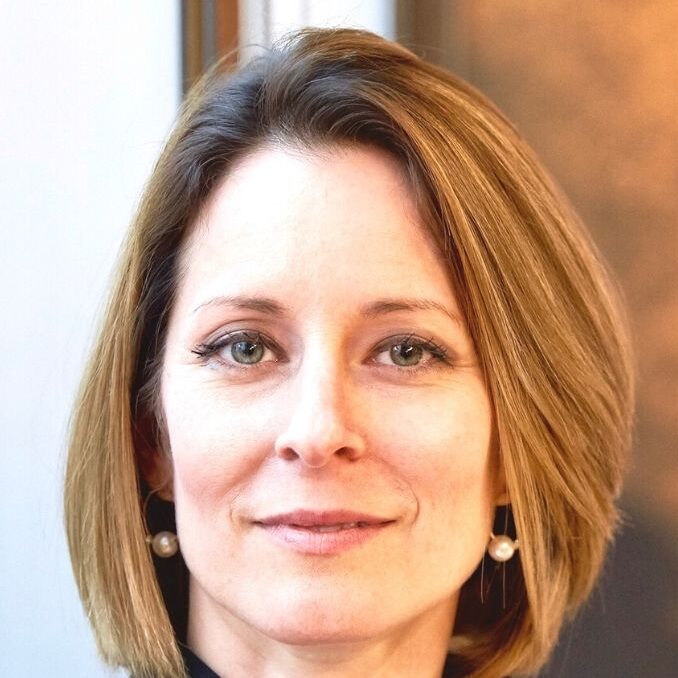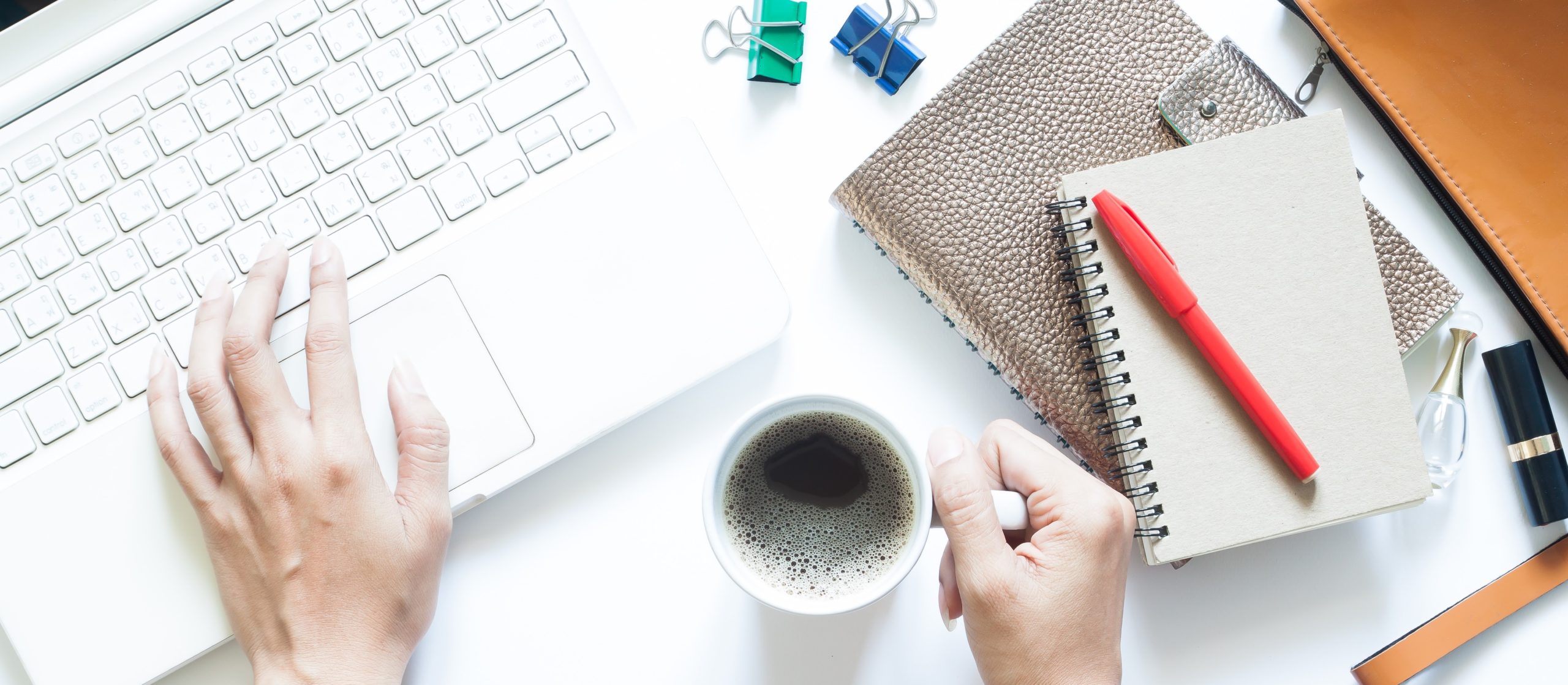2024…
Practical ways to live less wastefully, spend more consciously, and support local communities.
Laura Reinholz, BMO's Head, Workplace Experience GTA, shares her personal journey and tips for how you can start.

By Hailey Eisen
We’ve all heard of conscious consumerism — but do you know what it really means or where to begin? With an increasing number of global and local issues in need of our attention, many are looking for real ways to make an impact. While we may aspire to “do more,” it’s not always easy to know which actions will actually make a difference.
Laura Reinholz — the current Head, Workplace Experience GTA and former Director, BMO for Women — has done a pretty significant life overhaul, changing the way she lives and shops to be more conscious, sustainable, and thoughtful. Her journey began four years ago, but as she tells us, it’s not nearly complete.
Laura found inspiration through work, where her focus is on breaking down barriers for women in their personal, professional, and financial lives. As she began to make these changes, she became so passionate that she enrolled in a graduate diploma in Corporate Social Responsibility and Sustainability. Her commitment has increased year over year to a point where spending money consciously has become second nature.
That being said, it doesn’t take a huge overhaul to make a big difference. In fact, the easiest way to begin is by taking one or two conscious steps in the right direction.
Where did your journey into conscious consumerism begin?
In my role with BMO, I began focusing on supporting women-led businesses as a means of economic development. I also became a SheEO activator around the same time, and began to take an intersectional look toward supporting Black women owned businesses, Indigenous women owned businesses, and 2SLGBTQIA+ owned businesses.
I wanted to understand how I could show support through my spending and create economic empowerment amongst those historically underrepresented groups, while also increasing my support in the community. What I found through my research was that many of these groups had products and services that were doing something through a lens of sustainability as well — whether intentional or not. Many were solving local issues while also addressing larger global issues as a result.
“The first step is awareness; recognizing that you want to make a change, learning more about the things you’re purchasing and their impact on the world as a whole.”
Where does someone even start when it comes to making changes?
The first step is awareness; recognizing that you want to make a change, learning more about the things you’re purchasing and their impact on the world as a whole. For me, it began with sustainability. And, while carbon emissions seem to be an almost overwhelming issue, there are small things you can do within your own home that can contribute in some way.
What was the first thing you changed?
I started by looking at the impact my purchases had on the environment — be it single use plastics or fast fashion. An easy way to start is to pay attention to the stores and restaurants you frequent. Are they using other products instead of plastic? Can you bring your own bags, containers, and cups? Can you buy refillable products that produce less waste?
You mentioned fast fashion. Were you able to change the way you bought clothes?
Yes. When it came to clothing, I chose to overhaul my wardrobe slowly. The fashion industry creates a massive amount of landfill waste and uses a huge amount of water in its production process. Much fast fashion is also produced under poor working conditions. You end up buying clothing that you wear for six months, and even if you donate it, so much still ends up in the landfill. There’s also some fitness attire that’s now seeping microplastics into the laundry and making their way into the waterways.
When I started to make personal changes to my wardrobe, I looked at the impact clothing brands were having and started choosing more sustainable brands that were locally made. It just so happens that there are a lot of women-owned companies making sustainable clothing, paying living wages, converting ocean plastic into clothing, and making capsule collections that can be mixed and matched. While it will cost more up front, I do see it as an investment. When I stopped buying frequent inexpensive fast fashion items and chose fewer, more costly pieces that would last, the amount I spent on clothing evened out. Take my winter jacket, for example. I bought a Patagonia jacket in 2015 that I’m still wearing. Their lifetime warranty means you can take it in and have it repaired when needed. I no longer need to buy a new jacket every few years. There are also amazing finds at vintage, consignment and second-hand stores. The majority of my “designer” items were purchased this way.
OK, what’s next? Beyond your closet, where else can you make meaningful changes?
The next obvious place I looked was the kitchen. Food waste was something that really bothered me. To solve for all the food that was going bad and being thrown out, I started to meal plan. Every Saturday morning, we sit down and plan out our meals (breakfasts, lunches and dinners now that we are working from home) for the week. I then go to the St. Lawrence Market to do my shopping, buying only what I’ll need that week. The next thing I do is clean all my fruits and veggies and prep them into containers so they’re easily accessible. By Friday night — our night for takeout — there’s nothing left in our fridge.
The reason we shop at the market is because on Saturdays, they have a farmers’ market and we have the option to buy from local growers and producers. I like to know that my dollars are going toward people from this region who are growing and producing food. I also bring all my own cloth bags, because there’s nothing that bothers me more than all the plastic in the grocery store.
“I recognize that I’m fortunate to live in downtown Toronto and have so many options when it comes to local small businesses I can support. I’ve also invested time to research businesses online and find individuals who are making what I need to buy.”
Going to the market every Saturday sounds like a conscious decision. How do you decide where to shop and is that part of conscious consumerism?
For sure it is. But I have to say, I recognize that I’m fortunate to live in downtown Toronto and have so many options when it comes to local small businesses I can support. I’ve also invested time to research businesses online and find individuals who are making what I need to buy. I won’t shop at some companies because of the way they treat their employees, and while that means I may pay more for certain items, I want to know that employees are being treated and paid fairly.
Where do you look to find businesses you’re aligned with?
As I mentioned, Google searches often turn up lots of results. Google ‘sustainable activewear in Canada,’ for example, and you’ll find articles listing different companies. You can then go to the individual company’s website to do more research. I also have found great brands by wandering into local stores that have values similar to my own. There’s also a lot on social media now. Once you start following a couple brands, you’ll end up seeing posts from others like them.
Have you experienced any secondary benefits from making more thoughtful choices about how you shop?
Yes! The best thing to come of this is the customer service. Last Christmas because of COVID, I couldn’t see my family who all live in B.C., so we decided to send gifts (usually we opt for experiences instead). Our agreement was, everything we bought had to be sourced locally. So, there I was, looking for local, women-owned, BIPOC-owned, socially conscious gifts that I could ship to my family in Vancouver Island and Whistler. I was able to create these amazing Christmas care packages. With every order that was delivered to me, I got this nice personalized message; when I wrote to engage with them on social media, they would engage back; and if there was ever an issue, I was contacted by a human being very quickly who was committed to making things right. That level of service you just don’t get with large companies.
What’s the biggest challenge you’ve had with all of this?
The area I’m having the hardest time switching over is personal care. Not all natural products work as well, and I’ve found it harder to make the switch. I just — after years — found a shampoo line that’s locally made and has removed all the water in the manufacturing process. The shampoo comes in an aluminum tube you can recycle when it’s done and there’s a plastic cap they take back and reuse.
That’s great. When you find a product you love, do you share it with others?
Oh, all the time. That’s a big part of the process. I do a bit of that on Instagram and I talk about it incessantly. That’s a philosophy I’ve taken with BMO for Women as well. We walk the talk. Every vendor we use for the program, even if not at the enterprise level, is women-owned. My journey with BMO has gotten me to where I am personally.
I believe spending deliberately helps level the playing field for historically underrepresented groups. When you consciously spend money with those businesses, you’re creating an environment in which they can thrive, which means they’ll be more likely to access financing to grow their businesses. The ripple effect also happens when these business owners succeed and are able to invest back in their own, often marginalized communities, and can continue to empower others.
Now that you’ve inspired us to make a change — is it time to throw everything out and start over?
No, definitely not. Making a total change all at once could end up being unnecessarily wasteful. For me it’s been a four-year process, and I still see myself as only being half way there. Identify areas where you can make the most impact, and start there.
2024…
Gallery: 2024 RBC Canadian Women Entrepreneur Awards Program
Eva…
Meet Eva Hartling, Founder of The Brand is Female: Empowering Women and Celebrated for Her Impact on Women in Leadership
TORONTO,…
Twenty-One Remarkable Women Entrepreneurs Named 2024 RBC Canadian Women Entrepreneur Awards Finalists
By…
Sponsorship, Strategy, and Success: How this Scotiabank Executive Champions Career Advancement Through Advocacy
Chef…

